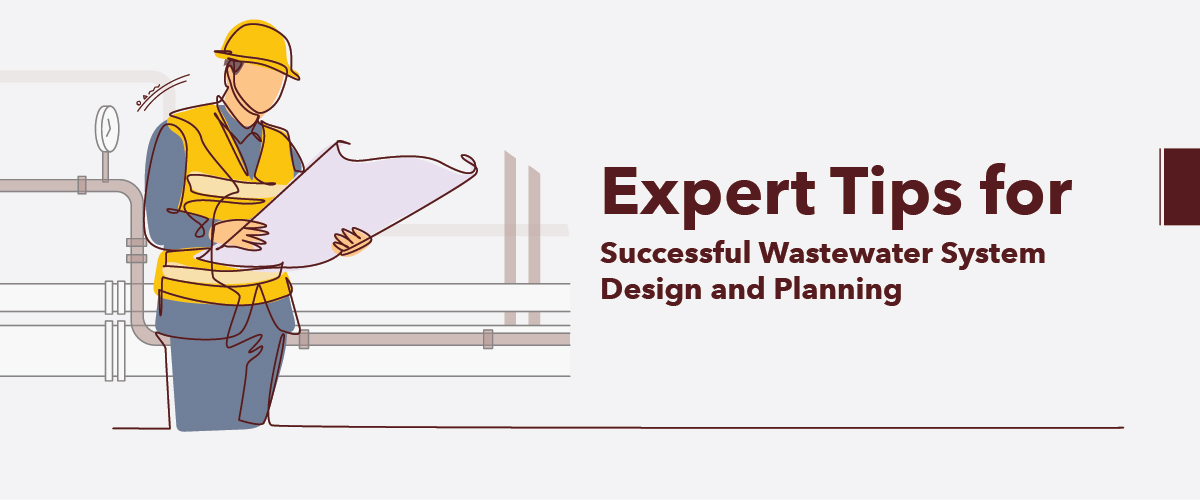
Wastewater handling is truly considered a very important part of municipal infrastructure, sustainable development, and the well-being of the community. Correct wastewater system design makes sure that housing, business, and manufacturing discharges are handled effectively, securing the organic water sources and societies from pollution. No matter if you are a construction engineer, a sustainability planner, or a real estate developer, knowing the variations of styling a proactive contaminated water system is super important. In this post, professional tips for effective wastewater system engineering and preparation to assist you in making systems that are trustworthy and eco-friendly, will be discussed.
Conduct a Thorough Site Assessment
An exact and expansive site verification is known to be the foundation of any successful wastewater system architecture. This covers assessing soil porosity, subsurface water level, pitch, and closeness to water sources. For instance, soils high in sand content may need various types of therapy tactics in contrast to heavy clay soils. Knowing these factors supports choosing the right treatment strategies, like wastewater treatment tanks, created wetlands or upgraded care plants.
Prioritize Scalability and Future Growth
Sewage systems are considered a long-term contribution you can make to your property. One common error in sewage system design is undervaluing expected population development and improved sewage production. To prevent expensive renovations, design solutions with growth potential. Include a scalable treatment system that could be prolonged when required. Make use of adaptable pipe piping networks and make sure that therapy plants include safety capacity margins. Long-term resilience style not just saves expenses but also prevents service interruptions and ecological hazards in the future
Choose Sustainable and Energy-Efficient Technologies
With the development of ecological alert systems and compliance demands, ecological wastewater system architecture is necessary than ever before. For instance, anaerobic reactors could always produce energy from natural waste, offering sustainable energy. Non-pressurized sewer systems decrease the requirement for high-energy consumption pumping. In addition, you should also consider adding water reuse machinery that handles wastewater for sprinkling or manufacturing usage, improving water preservation.
Integrate Robust Monitoring and Control Systems
Stylish sewage system architecture includes intelligent technology for system supervision and handling. Monitors could always address flow rates, toxic substance levels, and tool productivity on the spot, allowing a timely response to problems such as clogs and seepages. Including smart control systems support improves therapy processes, decreases operational expenses, and ensures adherence to discharge regulations. Prior problem identification truly avoids ecological harm and expensive instant fixes.
Engage Stakeholders Early and Often
As a matter of fact, effective sewage system planning also includes collaboration between various stakeholders, covers city administration, construction specialists, ecological communities, and the public. Prior involvement always supports finding issues, safeguarding needed licenses, and improving society assistance. Stakeholder contributions can also disclose native skills about flood behaviours, pollutant origins that may affect the system design. The discussion has to be clear and transparent across the task timeline, creating confidence and simplifying execution.
Plan for Maintenance and Operation
A well-styled sewage system is only successful if it is correctly taken care of and executed. Add upkeep considerations in your style like available assessment grades, long-term resources and transparent agreements. Educating native specialists and implementing regular upkeep schedules will prolong the system’s lifetime and its productivity. Overlooking upkeep could result in system faultage, ecological pollution, and expensive restoration most of the time.
Ensure Compliance with Regulatory Standards
Wastewater processing and release are closely monitored to secure the well-being of people and the surrounding area as well. Become knowledgeable about all appropriate regulations before the style procedure to prevent expensive restyles or legal problems. Guidelines always include outflow quality and supervising needs. Include these in your style and records to support approvals and assessment.
Consider Cost-Benefit Analysis
Aligning initial investment expenses with long-term productivity costs is very important. Meanwhile, upgraded cleaning technologies might have increased setup expenses they could provide savings through energy efficiency, decreased chemical usage, and minimal upkeep. Execute an economic analysis to find the most affordable solutions that align with your execution and ecological objectives as well. This technique often assists in making the right decisions and explaining tasks. Successful wastewater systems design is a complicated but also high-priority initiative that needs accurate planning, mechanical skill, and coordination, too. By performing complete site evaluations, planning for future development, choosing ecological tactics, adding intelligent supervision, including stakeholders, concentrating on upkeep, ensuring legal compliance, and analyzing expenses, you could improve the sewage system that assists society securely and effectively for years.